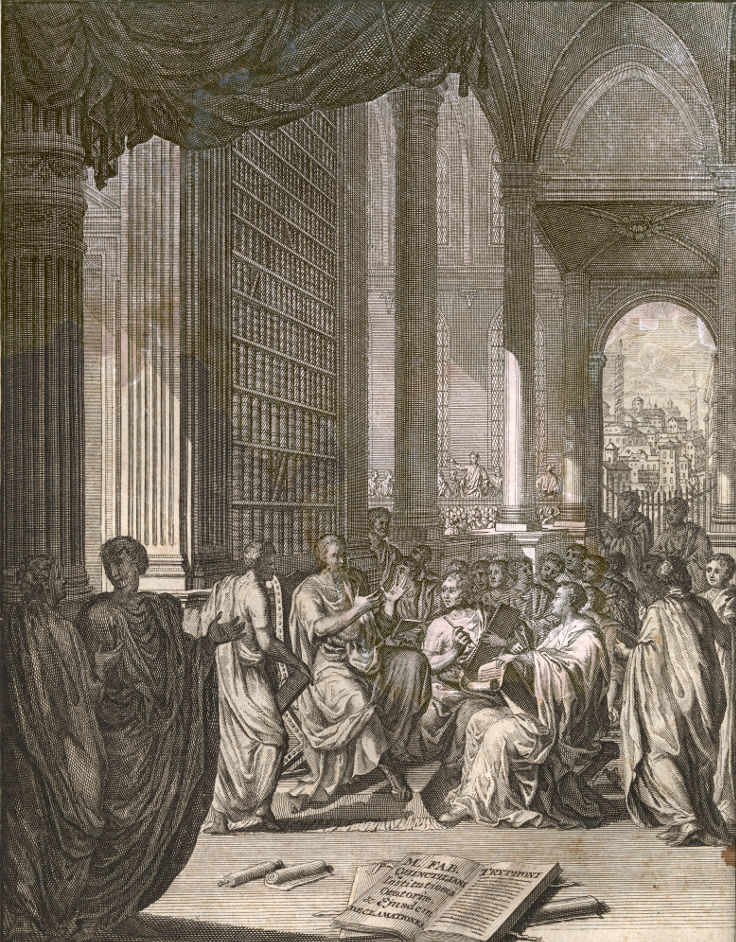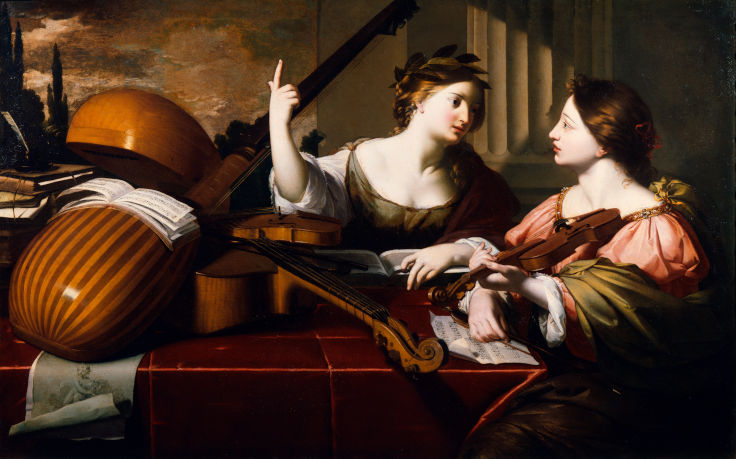On musical rhetoric
Musical rhetoric is the use of emotive gestures, derived from speech and drama, in musical composition and performance. Rarely studied today, rhetorical approaches to music once reigned supreme throughout the West, following a revival of classical oratory during the Renaissance. Music of the Baroque period became increasingly grounded in rhetorical principles as theorists, philosophers, singers, and instrumentalists across Europe attempted to codify the precepts of orators like Cicero and Quintilian in musical form. The resulting operas, cantatas, and sinfonias that spanned the gamut from subtle to fiery relied heavily on the dramatic abilities of their performers, as they applied the nuance of the spoken word — its rushings and draggings, its questions and shouts — to every moment of their music, aiming to affect the passions of their audience.
Scores of the Baroque period were designed with musical rhetoric in mind. Much contemporary writing on the topic, in fact, was aimed at composers, and — critically — composers almost invariably performed their own works, so the thin lines between composition and performance reflected classical authorities’ page-and-stage conception of oratory, which held the ancient Greek or Roman rhetorician responsible for everything from designing the thesis of a speech, to structuring the speech in the most effective way, to a delivery that matched. The Musical Rhetoric Workshop focuses centrally on Baroque repertoire, to take advantage of the opportunities Baroque composer-performers have created: to discover the clues to a powerful delivery that can affect listeners’ emotions, and discern the performance techniques that best take advantage of those clues and realize them out loud.

Rhetorical analysis is an exercise of the heart, mind, and instinct. Musicians practicing rhetorical performance must expect music’s structure to influence its story, and its different parameters to influence each other. This rising-third gesture — does it feel different when it lands on a high tonic? This leap of a fifth — when chromatically contracted to a tritone, when placed on an off-beat, when augmented, when played with the bassoons, what is its dramatic character now? The sensitive musician will quickly find that clues to musical affect, or the emotion we want the audience to feel, abound, usually expressed in gestures, or musical shapes in the score that have a sonic identity and a specific emotional potential.
While Baroque music, with its often low difficulty level and thinly-notated scores, is ideal for rhetorical discovery and practice, rhetorical performance is easily adaptable to any musical style where nuance and drama run high. Swing and bebop are laden with gesture. Freedom in postmodern classical music allows for the kind of ornamentation whose similarity to verbal expostulation and cadence gave rise, four hundred years ago, to music-rhetoric theory in the first place.
Students of the Musical Rhetoric Workshop explore these topics in detail. They read authors ancient (Mattheson, Quintilian) and modern (Tarling, Ranum, Bartel) to learn the scope, nature, and application of musical-rhetoric theory. They invent their own musical gestures through improvisation and elementary composition. They practice playing with speech cadence. Above all, they offer each other commentary on their success. What’s the affect of that driving
rhythmic figure? What affect did you play? Did you make that emotion in your sound? No? Try again.

